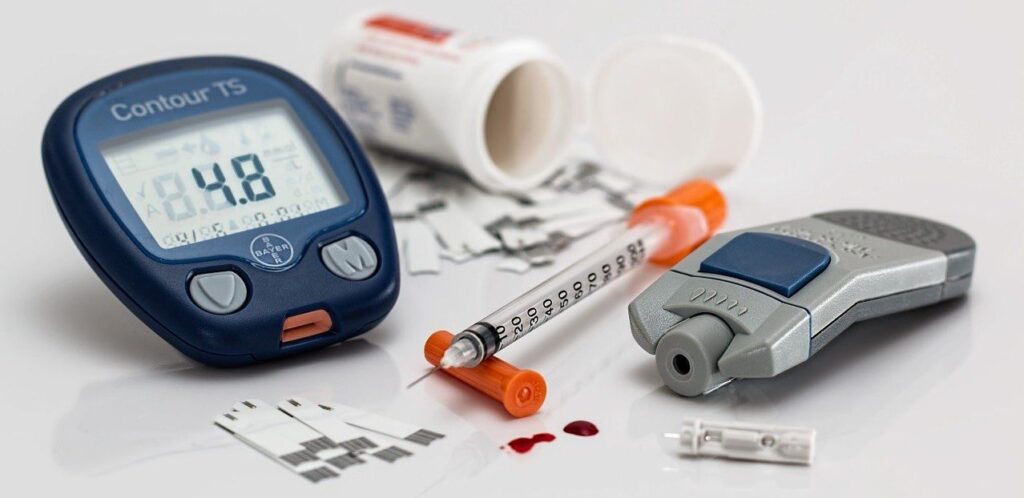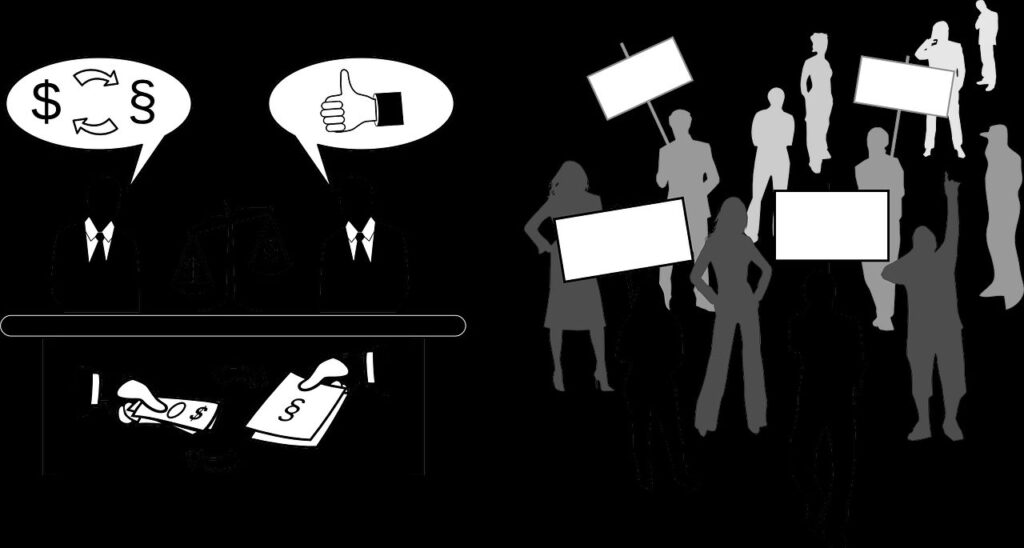
In early 2021, the price of insulin jumped unexpectedly. Many have probably seen the woman’s Facebook video upset over the cost of her son’s insulin which sends off alarm bells that something is amiss. Then Facebook proceeds to fact check her which even then gives misinformation about the actual problem itself, which is corporatism.
The frequent subject of blame for the price spike is the President, as Joe Biden signed an executive order halting a previous ruling by the Trump administration aimed at reducing insulin prices. However, it’s not so simple. The answer is not in an executive order or even a fatal flaw in the market economy. Instead, the problem is the unholy alliance between big business and big government that quashes competition and enables fixing of the market.
Corporatism vs. Capitalism
As we will explain in a separate article, there is a vast difference between capitalism and corporatism. A free-market economy does not involve bailouts, special tax breaks, and burdensome regulations that only big businesses can comply with. In a free market, the rules of the game are simple, and the government does not pick winners and losers.
Corporatism in Pharmaceuticals
In the pharmaceutical industry, there is a lot of corruption between government officials and drug companies. Agencies like the Food and Drug Administration act as barriers to entry, which limits competition and innovation. There is also a well-known “revolving door” among pharmaceutical executives and FDA regulators.
This creates an atmosphere that is rather cozy between the industry and the agency that is supposed to ensure food and medical products are safe for consumer use. This “revolving door,” according to two scholars, ends up creating perverse incentives.
When you know 60 percent of your colleagues who leave go to work for the industry, it may make you more likely to be the kind of regulator that gets along well with the industry, helps them shepherd drugs through …
One recent example of this was Alex Azar, the former Secretary of Health and Human Services. Before heading up that agency, he was a Senior Vice President at pharmaceutical giant Eli Lilly. While at Lilly, the company raised its insulin price three times over. After leaving the company, he became head of HHS.
Isn’t that at least the appearance of a conflict of interest?

So Why Is Insulin So Expensive?
Insulin has been around for a century. It is not some new product that has a lot of unknown variables and obstacles to overcome. So what is at the heart of these seemingly arbitrary price spikes? Corporatism.
In the pharmaceutical industry, this translates to the rejection of new competitors and patents. Existing companies have special favor with the FDA, which has the power to approve or disapprove a manufacturer to sell on the open market.
Without significant competition to incentivize good product creation at a fair price, the companies can (and do) charge whatever they want, and diabetics are left in a financial bind. Dr. Laura Williams, writing for the Foundation for Economic Education, lays out three steps the government takes to limit competition and keep the status quo on prescription drug prices.
First, the FDA limits the number of suppliers. Generic producers of prescription drugs frequently price their products at 30% less than the name brand. This is not something the existing companies can tolerate. So, they hire lobbyists and use the revolving door to keep competitors off the market.
Second, they also prevent drugs that are proven safe overseas from being imported. This artificially restricts the supply. Cheaper alternatives exist in Canada and Europe, but the FDA refuses to approve the importation of those drugs. To “prove something is safe enough for the American market,” applicants must shell out billions of dollars and spend over a decade of research to get a product approved. Very few can afford this, except the existing entities.
Third, they hide the prices of the drugs so that consumers are in the dark. Think about it: when is the last time you saw what your prescription costs? Have you ever noticed that number? I can’t remember ever really seeing a list price. Imagine if grocery stores treated food this way.
Fortunately, there are many grocery stores, and we can choose another place if we decide to play the game.
This is not so with the pharmaceutical industry. It is heavily regulated, but not in a way that benefits consumers; in fact, quite the opposite. Pharmaceutical executives run a company for years, then leave that company, but go work for the FDA while many of their colleagues are still with their former employer. Conflicts of interest abound, and we end up paying the price while they make the profit.
One Last Thing to Keep in Mind
Let’s remember one thing, though: profit is not inherently problematic. It’s one of the incentives that drive people to innovate and put their products on the market. Our lives are made better when entrepreneurs can make a living selling what they make or do.
But when the government’s coercive power is used to rig the economy in favor of certain existing entities at the expense of others, profiteering crosses a line into immorality. It’s not a problem per se for pharmaceutical companies to make a profit on their drugs. What is a problem is when they gain monopolized control over the market through the government and charge whatever prices they feel like.
So, at the end of the day, the insulin price issue bigger than Joe Biden or Donald Trump. Previous executive orders to reduce prices were merely a band-aid at best. Real change and relief will come when competitors can freely sell their version of insulin on the open market without being artificially prevented from doing so.
